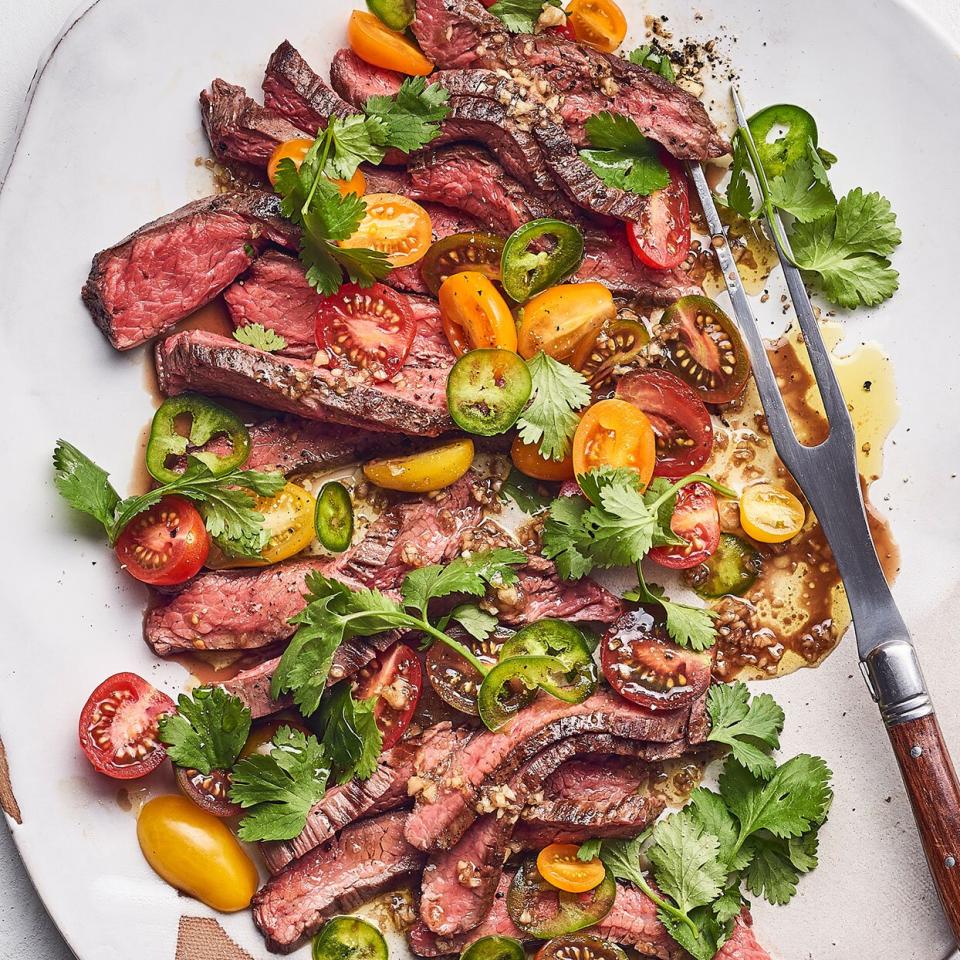New Research Says Many Americans Are Deficient in This Mineral—Here's What to Do About It
When we say "pump iron," we're guessing the first thing your brain jumps to is lifting weights. The Rock-style (ahem, or shall we say Michelle Obama-style?!) hardcore strength training.
But apparently we need to talk more about—and eat more—dietary iron. According to a new study published in The Journal of Nutrition, the average American adult's intake of iron dropped by 6.6% (males) to 9.5% (females) between 1999 and 2018. As a result, the estimated prevalence of iron-deficiency anemia is between 2.2 % and 10.5%, depending on age and sex.
Diving into data from that nearly two-decade timespan, the researchers determined that part of this drop in iron consumption is due to the fact that many of us are eating more plant-based menus. The United States Department of Agriculture's National Nutrient Database for Standard Reference reports that in 2018, compared to 1999, there was:
15% lower beef intake in the overall U.S. diet
9% decrease in dietary iron intake in adult females
6% decrease in dietary iron intake in adult males
In addition to eating less iron-rich beef (whether due to environmental concerns, health implications about eating copious amounts of red meat, animal welfare or other considerations), the beef we are eating may have lower naturally present iron levels than in years past. In fact, the scientists determined that 62% of iron-containing foods contained less of the mineral in 2015 than in 1999—and this is likely the one of the main reasons more Americans are falling into the category of "anemic."
And that anemic state isn't doing our energy levels (or overall well-being) any favors. Humans require iron for proper growth, to make hemoglobin (the protein in red blood cells that helps transport oxygen from the lungs to the rest of the body) and for hormone production.

Related: 25 Recipes to Boost Your Iron Intake
"Everyone's body processes and uses iron at different efficiency levels [aka bioavailability]. The amount of iron used by our bodies for growth and development is based on a variety of factors, including the source of the iron and what else is eaten at the same time," Caroline West Passerrello, M.S., RDN, LDN, a Pittsburgh-based spokesperson for the Academy of Nutrition and Dietetics, tells Healthline.
Iron comes in two forms:
Heme iron from animal sources, and
Non-heme iron from plant sources.
The body can process and use both, but what you pair with either form of iron can max out the potential body benefits. Phytates, which are found in grains and beans, may limit iron's bioavailability, while vitamin C-rich foods (such as watermelon, bell peppers, citrus fruits, kiwi and broccoli) can help the body put non-heme iron from plants to better use. (Psst ... Beef-free eaters, we've got your back with this list of 8 foods with more iron than beef.)
The researchers believe the focus on growing more crops per acre might be affecting the nutritional value of the food we eat directly as well as the food we feed farm animals (which we then may eat). Plus, many Americans are eating more processed foods, which can increase the risk for iron-deficiency anemia as well.
Women between age 19 and 50 (due to menstruation and the iron lost during that process), blood donors and vegetarians of any gender may be specifically impacted by these innate iron shifts in the food system. Adult men need 8 milligrams per day, while adult women should aim for 18 milligrams per day. To put that into perspective, here are the top 12 sources of iron, according to the National Institutes of Health Office of Dietary Supplements:
Fortified breakfast cereal (1 serving): 18 milligrams
Oysters (3 oz.): 8 milligrams
White beans (1 cup canned): 8 milligrams
Dark chocolate (3 oz.): 7 milligrams
Beef liver (3 oz.): 5 milligrams
Lentils (½ cup boiled): 3 milligrams
Spinach (½ cup boiled): 3 milligrams
Tofu (½ cup firm): 3 milligrams
Kidney beans (½ cup canned): 2 milligrams
Atlantic sardines (3 oz. canned in oil): 2 milligrams
Chickpeas (½ cup boiled): 2 milligrams
Tomatoes (½ cup canned stewed): 2 milligrams
As we continue to learn more about this research and adjust our diets to be more iron-smart, keep these 7 sneaky signs you could have iron deficiency in mind so you know if you might need to schedule a chat with your doctor to test your iron levels.

